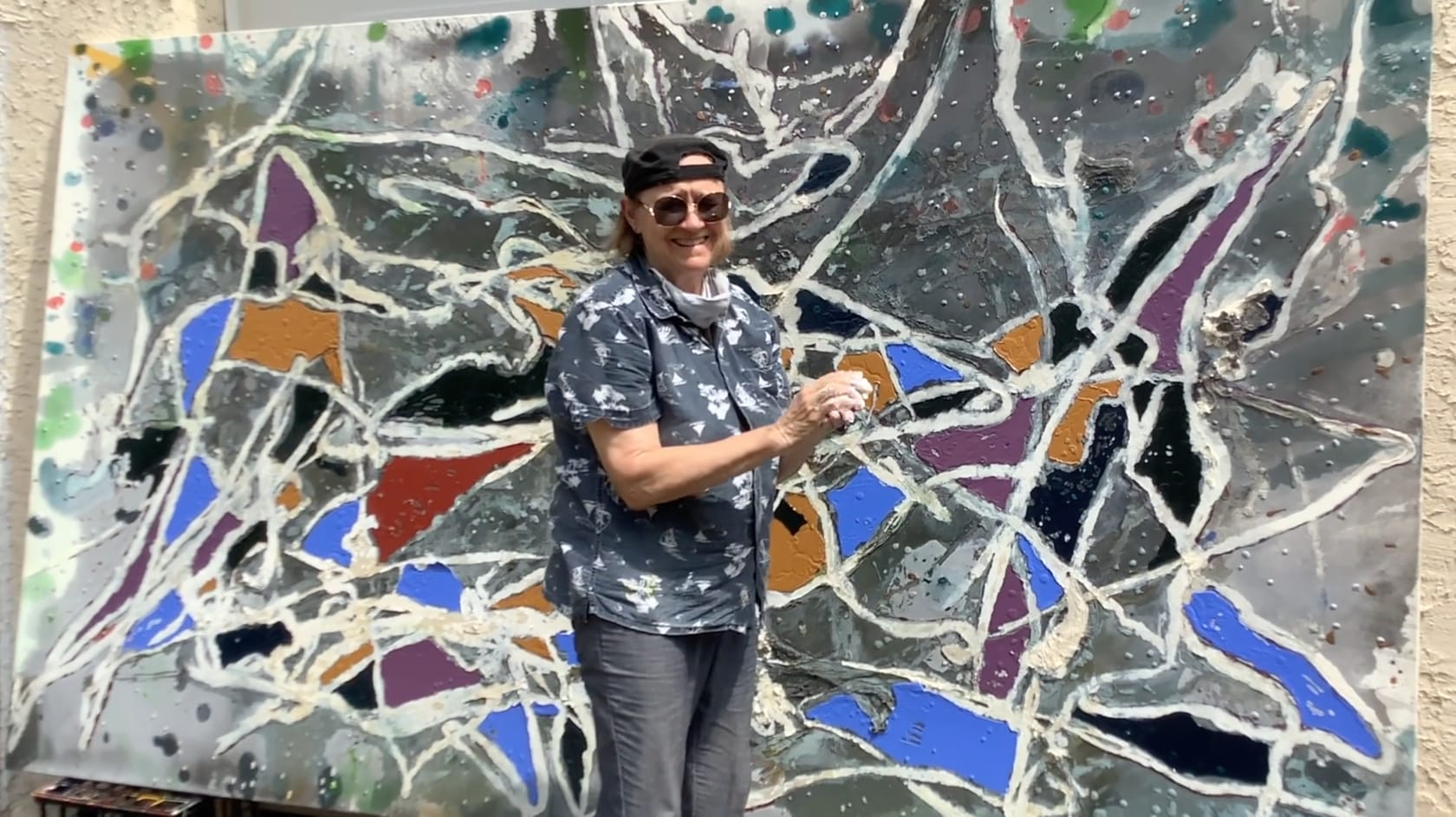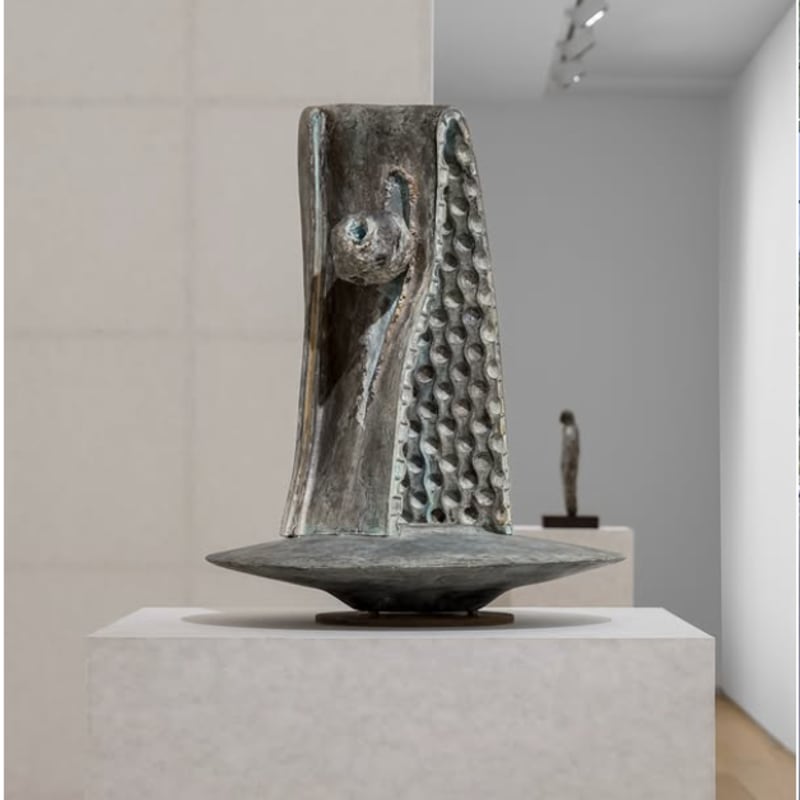A Focus on Painting Dona Nelson
A Focus on Painting
Curated by Julia Peyton-Jones
There has been a recent upsurge of exhibitions focusing on artists for whom painting is their preferred medium and this show presents the work of four painters, both established and emerging, who explore the medium in different ways. With materials ranging from yarn to newsprint to poured colour, the processes these artists use and the forms of their final works are compellingly diverse. Mandy El-Sayegh and Rachel Jones explore what appears to be abstraction, however at its core is an investigation of the human body and the formation of identity, while Alvaro Barrington and Dona Nelson play with form and materials not usually associated with painting.
Dona Nelson (b. 1947, Grand Island, Nebraska, USA) has an oeuvre spanning fifty years that has been exhibited internationally. Incorporating a variety of approaches to both image and material, Nelson is most recognisable for her two-sided stain paintings, in which the artist works on both sides of a stretched canvas. These characteristic paintings constitute a significant element of Nelson’s ongoing practice and a selection of these large-scale works will be presented in the upcoming exhibition.
Approaching the canvas as both a conduit and a ground, Nelson begins her two-sided paintings by throwing a net of gel-soaked cheesecloth onto the canvas, which dries to form linear grooves that direct the flow of the liquid acrylic that she pours on, before repeating the process and then removing or adding elements in turn. The direct pour of diluted acrylic paint acquires a new and unexpected appearance as it soaks through the canvas to the other side. As a result, one side of the painting often has a denser materiality, while the other takes on an illusionistic and imagistic quality. Painting ‘en plein air’, Nelson employs buckets of paint and tools such as spatulas or high pressure hoses to work on her canvases. Ripped, layered and interwoven with painted string, the finished paintings bear testament to their production, retaining traces of the artist's actions.
While referred to as having a ‘front’ (recto) and a ‘back’ (verso), Nelson works on both sides of the canvas repeatedly and in tandem, removing the priority traditionally given to the canvas's ‘front’. The finished works are often exhibited on floor-based steel or wooden constructions instead of hanging flat against the wall, which invites a novel way of viewing by encouraging visitors to walk around the paintings in order to experience them in full.


















































































































































































